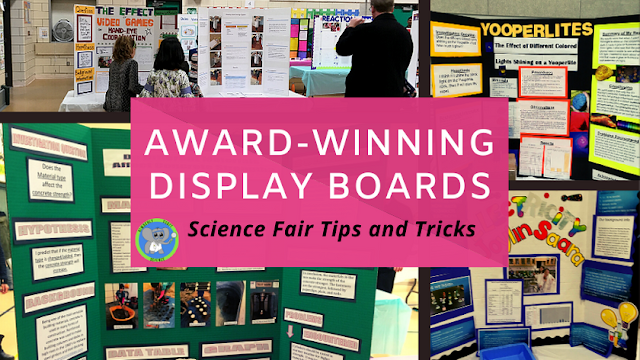What Are The Steps Of The Engineering Design Process?
There are several different types of projects that you can do at a Science Fair or STEM Fair.
1. Model of a Science Concept
2. Science Fair Project following the scientific method.
3. Engineering Project following the Engineering Design Process
You have decided you want to design an invention that solves a problem. This means you will be following the engineering design process. The engineering design process consists of lots of steps, but don't let that overwhelm you. Take each step one at a time and you will be amazed at the progress your invention makes. Always remember to learn from your failures. You are trying to solve a problem it doesn't happen overnight. Focus on the continued progress you are making.
Here are the traditional steps. Some fairs refer to them in different terms, so always check your fairs rules.
STEP 1What problem or need are you trying to solve?
Are you trying to create a new type of pencil? Do you want to create a device that will filter water to help in areas where water is scarce? Maybe you want to create a new toy car for kid's enjoyment? The ideas are endless.
STEP 2
Do some background research?
Are there other devices out there? What science and math might you need to know for developing your design? The design is also known as your prototype. Research about the problem or need for your project.
STEP 3
What are the requirements for your project?
The requirements may be a rule for your fair. Maybe you can only spend $20. This also includes constraints. A constraint is a limitation or restriction. May be your project must be small to fit in a backpack. The constraint may be something you discover in helping to solve a certain problem. Are there specific criteria your design must meet? Maybe you are designing a new type of tent. The constraints could be that it must be lightweight and fold up tight to fit in a small backpack. It must be leakproof.
STEP 4
What materials do you need?
This may be a long list in the beginning. Some materials you may decide did not work well. As you progress with your project keep a detailed list of everything you used.
STEP 5
Proposed Solution
You did your research and gathered your supplies. Now it is time to create a proposed solution. Start first with a diagram. It will change over time with testing. This is your time to brainstorm and put your ideas into action.
STEP 6
Design Phase
This will be the longest part of the process. Now you are going to create your creation. Throughout the process, you will test and make changes. Record detailed notes of the process.
STEP 7
Testing
Once your first design is complete test it to see if it meets the requirements. Make sure you have a specific test you are completing. This should include data you record that can later be put into a graph. Remember to make detailed observations and maybe a video.
STEP 8
Redesigning
This goes along with STEP 6 and 7 after your first test. If time allows you will make needed changes based on your test results. After the redesign test again. Hopefully, you will test several times and make several new designs. It is going to depend on the amount of time and the amount of money you have. You may find your project does not meet the requirements, but you made a lot of progress towards your prototype.
STEP 9
Summarize the Results
Write a summary of your data and observations. What happened?
STEP 10
Conclusion
Put it all together. What improvements could still be made? What was challenging? What further research could be done? This should be written in paragraph form.
STEP 11
Resources and Credits
This is also known as acknowledgments and references. This is where you site your resources and the people you may have interviewed. Make sure to acknowledge the people that helped too.
STEP 12
Create Your Display Board
Now you take everything and put it onto a display board. Keep it neat and clean. Don't get carried away with decorations. You want to highlight your prototypes and what happened. Check your fairs rules for the layout.



